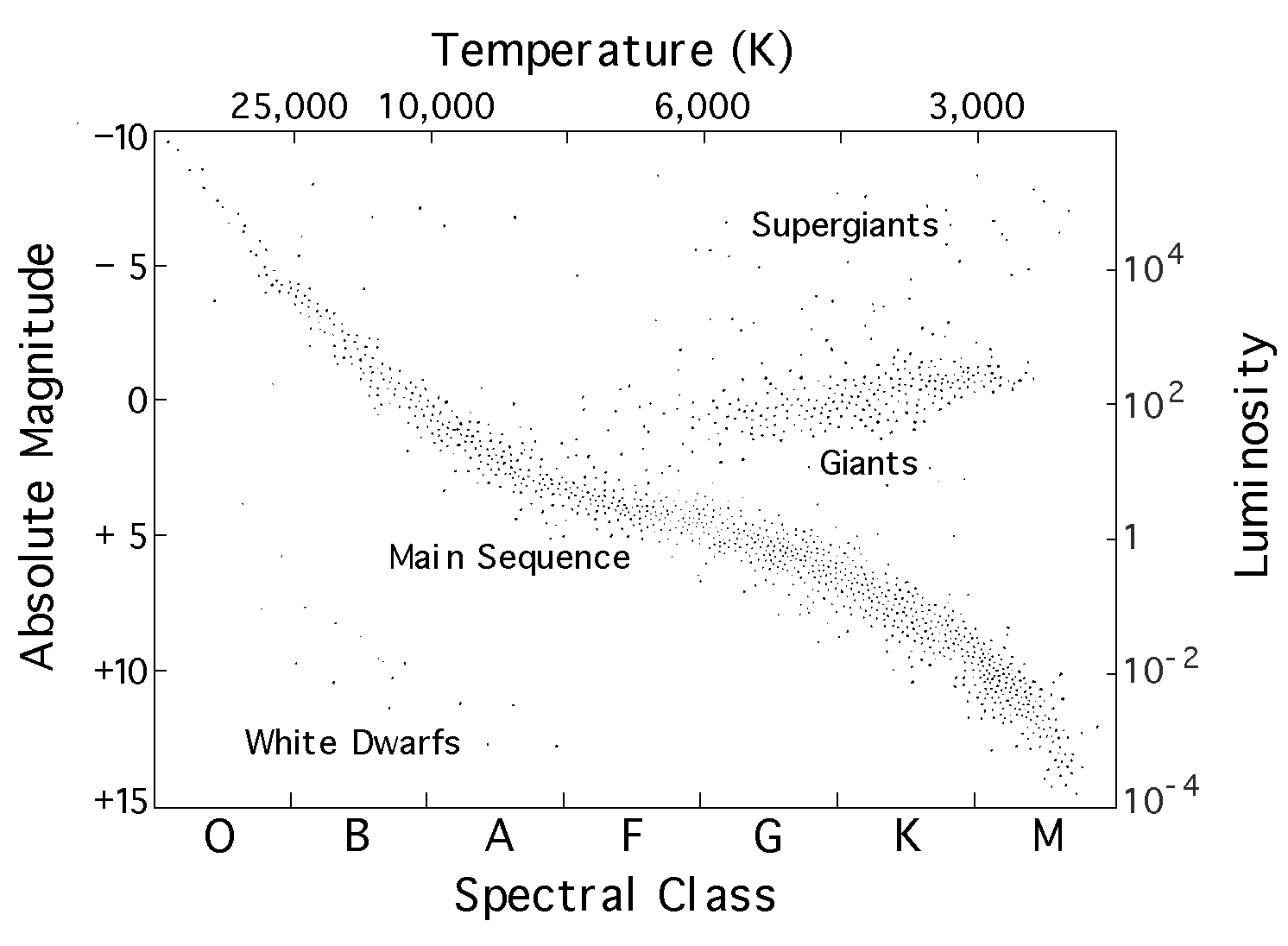
Gravity is the engine that runs most of the universe! If we start with a cloud of cold dense hydrogen (mostly), it will start to draw together due to the self-gravity of the cloud. (Where did that cloud come from? From a previous stellar explosion. Where did that previous star come from? We "chicken and the egg" back to the Big Bang!)
Now we employ some simple physics - conservation of energy! As the potential energy {energy of position} decreases for the molecules in the cloud (since they are coming together), the kinetic energy {energy of motion} increases. This kinetic energy is measured as the temperature of the cloud. As the temperature rises, there is radiation given off .. it will start to glow. Here is the sequence of a star like SOL :
The eventual end result of a star's life is determined by the mass of the star. Bigger stars burn out much faster (and more spectacularly). Smaller stars will have longer lives, and have calmer "deaths". Based on the starting mass:
The mass of a star is the most important characteristic used to distinguish stars from each other. The mass will determine all the other characteristics : temperature, luminosity, size, and life span. The Hertzsprung-Russell (H-R) diagram is used to illustrate the connection between the Absolute Magnitude and the Luminosity, and the Temperature and Spectral class of the star. Our Sun (SOL) has a luminosity of 1 (since the scale is relative to our Sun), and a temperature of about 7000 degrees - this puts it along the Main Sequence, in the lower middle of the image below.

Astronomers now realize that everything which appears to distinguish one star from another - temperature, luminosity, size, life span -- is determined almost entirely by one factor: the star's mass. The main sequence along the HR diagram is not a singular evolutionary path, as many had thought, but a portrait of the sky at one moment in time of stars with varying masses. Below is a version of the Hertzsprung-Russell diagram, which shows how the size, color, luminosity, spectral class, and absolute magnitude of stars relate. Each dot on this diagram represents a star in the sky whose absolute magnitude and spectral class have been determined. Notice that the data appear to clump naturally into groups: main-sequence stars, giants, supergiants, and white dwarfs.
There is a fascinating story of a woman that helped catalog over 500,000 stars here. This would be an interesting story to find more about!